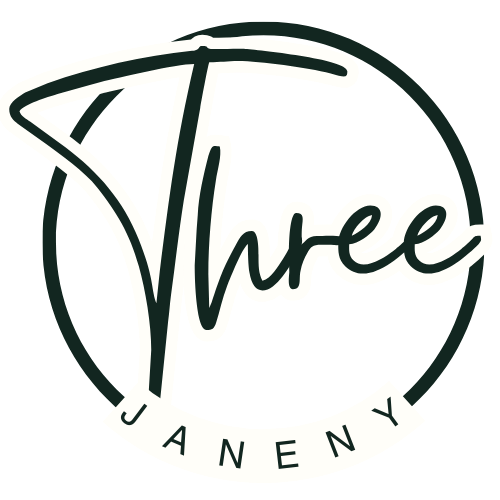Forward-Draw vs Reverse-Draw Crossbows: Which Design Wins?
Crossbow technology has evolved dramatically over the past decade, with manufacturers pushing the boundaries of speed, accuracy, and user experience. Among the most significant developments in modern crossbow design is the emergence of reverse-draw systems as a viable alternative to traditional forward-draw configurations.
Table Of Content
- Understanding Forward-Draw Crossbow Design
- Construction and Mechanics
- Performance Characteristics
- Exploring Reverse-Draw Crossbow Technology
- Revolutionary Design Elements
- Mechanical Advantages
- Accuracy and Precision Comparison
- Forward-Draw Accuracy Factors
- Reverse-Draw Precision Advantages
- Power and Speed Performance Analysis
- Forward-Draw Power Delivery
- Reverse-Draw Energy Transfer
- Handling and Maneuverability Differences
- Forward-Draw Handling Traits
- Reverse-Draw Maneuverability Benefits
- Cost and Value Considerations
- Forward-Draw Economic Factors
- Reverse-Draw Investment Analysis
- Making Your Decision: Which Design Suits You?
The choice between forward-draw and reverse-draw crossbows represents more than just a preference—it affects everything from your shooting accuracy to your hunting success. Both crossbow types offer distinct advantages and limitations that can significantly impact your archery experience.
Understanding these differences becomes crucial when you’re ready to invest in a quality crossbow. The wrong choice could lead to frustration, missed opportunities, and ultimately, an expensive mistake that affects your performance in the field or at the range.
Understanding Forward-Draw Crossbow Design
Forward-draw crossbows represent the traditional approach to crossbow construction, featuring limbs that extend forward from the riser toward the target. This time-tested design has dominated the crossbow market for decades and continues to be the preferred choice for many hunters and target shooters.
Construction and Mechanics
The forward-draw system positions the limbs in front of the trigger mechanism, creating a familiar sight picture for most shooters. The string travels from the limb tips back to the trigger assembly, following a straightforward mechanical path that makes maintenance and repairs relatively simple.
Key components include:
- Limb assembly: Positioned at the front of the crossbow
- Riser: Central mounting point for accessories
- String path: Direct line from limbs to trigger
- Cam system: Located at the limb tips for compound models
Performance Characteristics
Forward-draw crossbows typically excel in several performance areas. Their longer power stroke often translates to higher arrow speeds, making them attractive for hunters seeking maximum kinetic energy. The design also allows for easier string replacement and maintenance, as all components remain accessible.
The weight distribution of forward-draw crossbows tends to be front-heavy, which some shooters find provides better stability during aiming. This balance point can help reduce movement and improve consistency, particularly when shooting from a rest or bipod.
Exploring Reverse-Draw Crossbow Technology
Reverse-draw crossbows flip the traditional design concept by positioning the limbs behind the trigger mechanism. This innovative approach addresses several limitations inherent in forward-draw designs while introducing its own set of characteristics.
Revolutionary Design Elements
The reverse-draw configuration moves the limbs closer to the shooter, fundamentally changing the crossbow’s balance and performance profile. This design creates a more compact overall package while potentially improving accuracy through better weight distribution.
Notable features include:
- Rearward limb placement: Limbs positioned behind the trigger
- Extended riser: Longer front section for accessory mounting
- Inverted string path: String travels forward from limbs
- Centralized weight: Better balance point for shouldering
Mechanical Advantages
The reverse-draw system offers several mechanical benefits over traditional designs. The limb position allows for a longer power stroke without increasing the overall crossbow length, potentially improving arrow speed and energy transfer.
Additionally, the design often results in a better balance point that reduces fatigue during extended shooting sessions. The string angle at full draw tends to be more favorable in reverse-draw systems, which can contribute to improved accuracy and reduced string wear over time.
Accuracy and Precision Comparison
Accuracy remains the primary concern for most crossbow shooters, whether hunting or target shooting. Both forward-draw and reverse-draw systems can deliver exceptional precision, but they achieve it through different mechanical approaches.
Forward-Draw Accuracy Factors
Forward-draw crossbows benefit from their established sight radius and familiar handling characteristics. The front-heavy balance can provide stability when properly supported, and the straightforward string path eliminates potential accuracy variables.
Factors affecting forward-draw accuracy:
- Sight radius: Distance between front and rear sights
- String clearance: Potential for arrow contact with accessories
- Balance point: Front-heavy design requiring proper support
- Vibration control: Traditional damping methods
Reverse-Draw Precision Advantages
Reverse-draw crossbows often demonstrate superior accuracy potential due to their improved balance and reduced torque. The centralized weight distribution allows for more natural shouldering and aiming, while the extended riser provides increased accessory mounting options.
Precision benefits include:
- Improved balance: Natural shoulder position
- Reduced torque: Better weight distribution minimizes twisting
- Enhanced stability: Easier to maintain a steady aim
- Consistent string alignment: More predictable arrow release
Power and Speed Performance Analysis
Arrow speed and kinetic energy delivery represent critical performance metrics for crossbow selection. Both design types can achieve impressive velocities, but they accomplish this through different mechanical approaches.
Forward-Draw Power Delivery
Traditional forward-draw crossbows have long been associated with high arrow speeds, particularly in compound configurations. The direct string path and established cam technology allow manufacturers to optimize power delivery efficiently.
Speed considerations include:
- Power stroke length: Distance string travels during shot
- Cam efficiency: Energy transfer from limbs to arrow
- String weight: Lighter strings improve speed
- Arrow compatibility: Works well with various aluminum arrows
Reverse-Draw Energy Transfer
Reverse-draw systems often achieve comparable or superior speeds through their extended power stroke capability. The design allows for longer string travel without increasing crossbow length, potentially improving energy transfer efficiency.
Performance factors:
- Extended stroke: Longer acceleration distance for arrows
- Optimized geometry: Improved energy transfer angles
- Reduced friction: Smoother string path in many designs
- Consistent power: More uniform energy delivery
Handling and Maneuverability Differences
Field performance extends beyond raw speed and accuracy to include practical handling characteristics. The choice between forward-draw and reverse-draw crossbows significantly impacts how the weapon performs in real-world hunting and shooting scenarios.
Forward-Draw Handling Traits
Forward-draw crossbows offer familiar handling characteristics that many shooters find intuitive. The front-heavy balance requires proper technique but provides stability when correctly supported. These crossbows typically feature straightforward loading procedures and simple maintenance access.
Handling characteristics:
- Weight distribution: Front-heavy, requiring support
- Loading ease: Simple arrow placement procedure
- Maintenance access: Easy string and component service
- Sight picture: Traditional view over the arrow
Reverse-Draw Maneuverability Benefits
The improved balance of reverse-draw crossbows often translates to better field handling, particularly in confined spaces or when shooting from awkward positions. The centralized weight distribution reduces fatigue and allows for more natural weapon manipulation.
Maneuverability advantages:
- Balanced feel: Natural shouldering and aiming
- Compact handling: Shorter effective length in tight spaces
- Reduced fatigue: Better weight distribution for extended use
- Versatile positions: Easier shooting from various stances
Cost and Value Considerations
Investment decisions require careful analysis of both initial purchase price and long-term ownership costs. Forward-draw and reverse-draw crossbows often carry different price points and maintenance requirements that affect overall value.
Forward-Draw Economic Factors
Traditional forward-draw crossbows typically offer more budget-friendly entry points, with established manufacturing processes keeping costs competitive. Replacement parts and service tend to be more readily available due to the widespread adoption of this design.
Cost considerations:
- Initial investment: Generally lower entry-level pricing
- Replacement parts: Widely available components
- Service costs: Standard maintenance procedures
- Resale value: Established market for used units
Reverse-Draw Investment Analysis
Reverse-draw crossbows often command premium pricing due to their advanced design and newer technology. However, the improved performance characteristics may justify the additional investment for serious shooters.
Value factors:
- Premium pricing: Higher initial investment required
- Advanced features: Cutting-edge technology and materials
- Performance benefits: Potential accuracy and handling improvements
- Future-oriented: Represents evolving crossbow technology
Making Your Decision: Which Design Suits You?
Selecting between forward-draw and reverse-draw crossbows ultimately depends on your specific needs, budget, and shooting preferences. Both designs offer distinct advantages that appeal to different types of shooters.
Consider forward-draw crossbows if you prioritize:
- Budget-conscious selection: Lower initial investment
- Traditional handling: Familiar shooting characteristics
- Simple maintenance: Easy component access and service
- Proven performance: Established track record of reliability
Choose reverse-draw crossbows when you value:
- Enhanced accuracy: Improved balance and precision potential
- Advanced technology: Cutting-edge design innovations
- Better handling: Superior weight distribution and comfort
- Premium performance: Maximum capability regardless of cost
Both crossbow types can deliver excellent performance with quality aluminum arrows when properly matched to your shooting style and requirements. Take time to handle both designs, consider your intended use, and factor in your budget constraints before making this important decision.
Your choice between forward-draw and reverse-draw technology will influence your crossbow experience for years to come. Invest in quality components, practice regularly, and maintain your equipment properly, regardless of which design you ultimately select.

